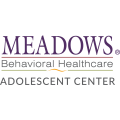1. Practice Health Habits Independently
Mental Health Resources
Explore the resources for tips, ideas, conversation starters and next steps.
Receive Tips to Your Inbox
Actual daily living tips can be delivered to your email inbox. Subscribe Now, Cancel Anytime.
Healthy Tips
Good
- Healthy Hobbies
- Good friends who are positive
- Meditation/Religion
- Activity/Movement
Better
- Healthy workplace positivity
- Building and keeping strong family ties
- Spending time that makes positive memories (hiking with friends, picnics)
- Service for others (elderly care, yard work for neighbors, etc.)
- Service for others (elderly care, yard work for neighbors, etc.)
- Get outside regularly (with someone is optimal)
Best
- Aerobic exercise 30 min/day, 3–5 times per week
- Gratitude journal
- Providing service at least once per week
- Getting outside of your comfort zone and giving back is a very healthy way to support a neighbor or friend in need
- Connect with others/friends daily
- Strong sleep routines
2. Local Therapist (or Online)
Mental health support, first steps. Asking the right questions will help you find the right therapist. Often covered by insurance.
3. Intensive Outpatient (IOP)
Therapy at this level is for more severe needs. Finding either online or local services can make a big difference. IOP is similar to a Local Therapist but has a more “wrap-around” approach whether in-person or online. Sessions are 3-5 times per week and focus on stabilization and support. The IOP process, similar to a Local Therapist, is regularly covered by insurance.
4. Wilderness Treatment— First Stop for Inpatient
Wilderness treatment helps children understand that they need help. A wilderness experience is important for youth as it helps them understand that their needs can’t be blamed on friends, parents, family, drugs, etc. It is their problem to face. Wilderness sometimes is the only therapy needed, often needs to be coupled with a Residential Treatment Care (RTC) experience for longterm tools and lifestyles. If you need help choosing a wilderness experience, begin here. Not typically covered by insurance.
5. Inpatient Residential Treatment Care (RTC)
Inpatient Residential Treatment Care teaches skills, tools and stabilizes medication for participants. Many RTCs prefer a student with previous wilderness treatment. RTC programs generally takes shorter and behavior is better on the whole. (THE PRIOR SENTENCE IS INCOMPLETE) If you need help choosing an RTC experience, begin here. Not usually covered by insurance.
RTCs who have committed to higher clinical standards:
6. Hospitalization
Hospitalization is an option at any level, but is used less than all the other options. Proactive treatment, healthy habits and medication control can help prevent the need for hospitalized care. When is hospitalization needed? This is a case by case decision. If your child is actively suicidal or caught in an attempt, it is needed. If you think a manic episode or suicidal attempt is imminent, hospitalization is likely necessary. Often covered by insurance.





















